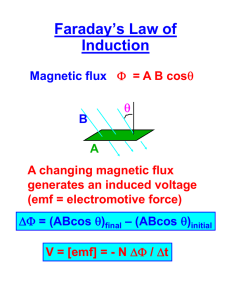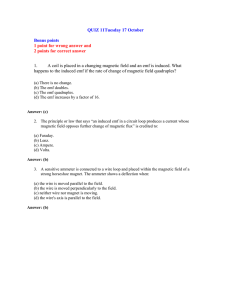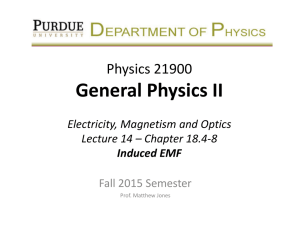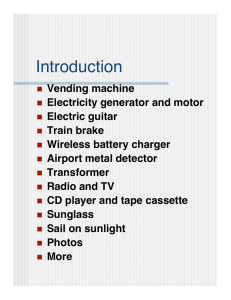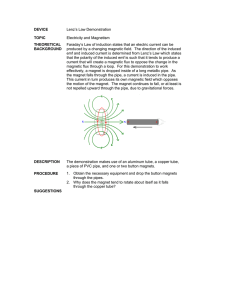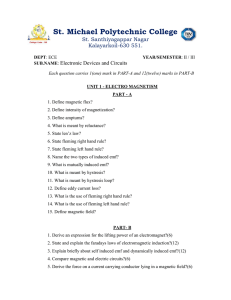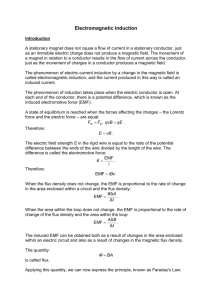Electromagnetic Induction (1) Motional EMF B is constant. The
advertisement
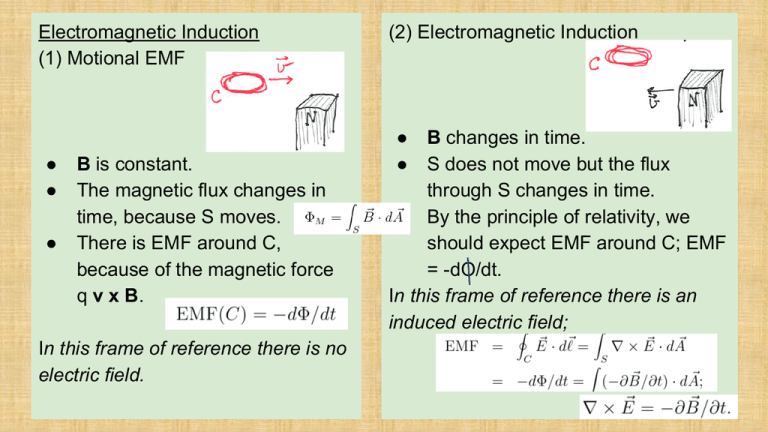
Electromagnetic Induction (1) Motional EMF ● ● ● B is constant. The magnetic flux changes in time, because S moves. There is EMF around C, because of the magnetic force q v x B. In this frame of reference there is no electric field. (2) Electromagnetic Induction ● ● B changes in time. S does not move but the flux through S changes in time. ● By the principle of relativity, we should expect EMF around C; EMF = -dO/dt. In this frame of reference there is an induced electric field; Faraday’s Law A magnetic field B(x,t) that changes in time produces an electric field E(x, t) that curls around the change of B. Example (qualitative) As the magnet moves toward increasing z, what is the electric field at points on the circle C (at z = 0 )? Lenz’s Law If a conductor is present then the direction of the induced current opposes the change of flux. Example -- The magnet is above the conductor, moving downward. -- Calculate the clockwise EMF. -- Define n to be the downward normal vector. Is the direction of the EMF in agreement with Lenz’s Law? The currents induced in the copper plate (“eddy currents”) are counterclockwise. By Ampere’s law, the eddy currents create a magnetic field directed upward (right hand rule again!). This opposes the change of flux. Example (quantitative) Consider two poles of an electromagnet. We can change the magnetic field by varying the current (not shown). Determine the electric field in the gap between the poles. The betatron condition … (1) The circular motion implies (2) The electric force implies Thus we must require which is arranged by designing the correct shape of the magnet poles. The second betatron at the University of Illinois (1950) produced 300 MeV electrons. Donald Kerst and the first betatron (1940)

